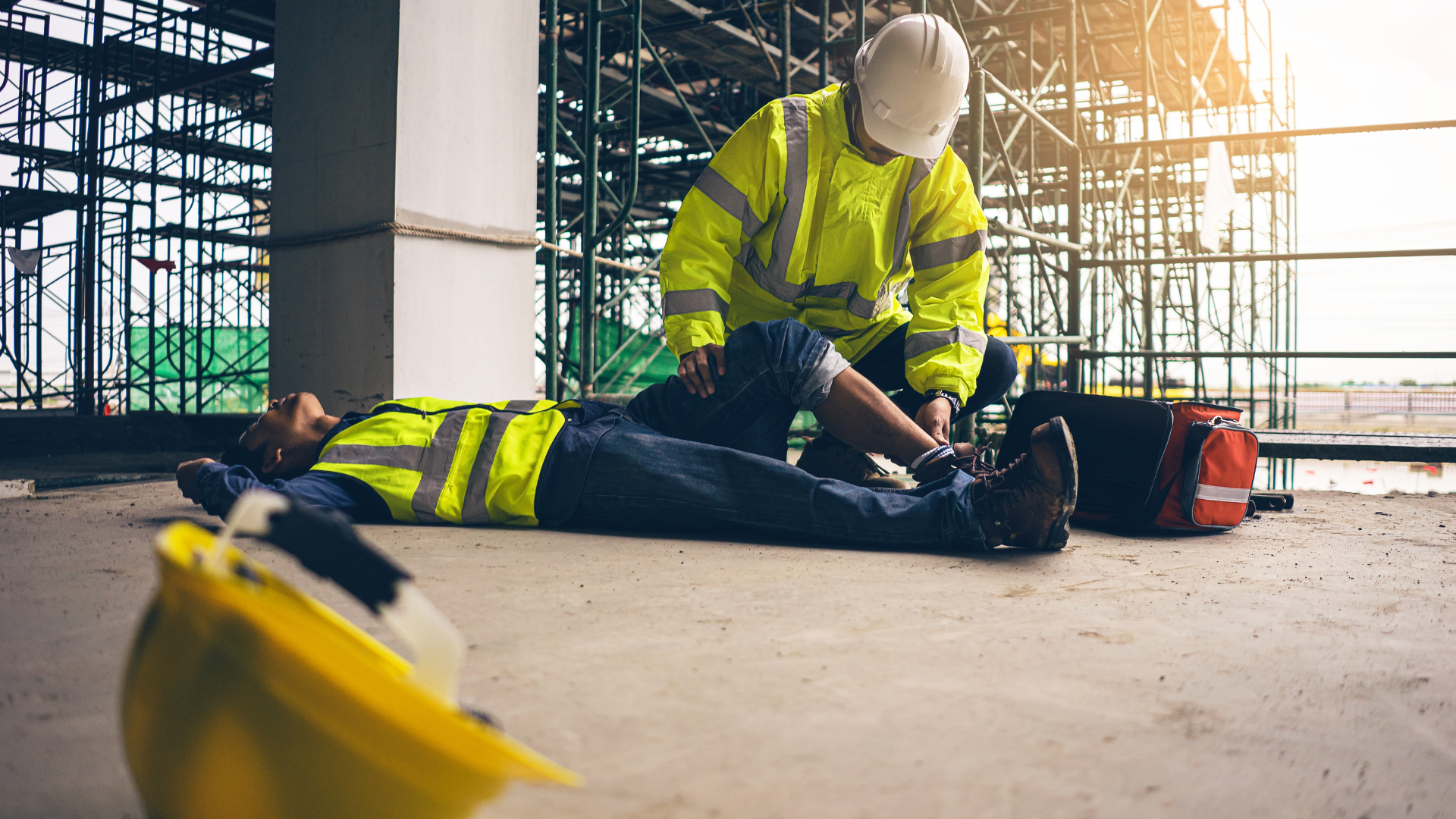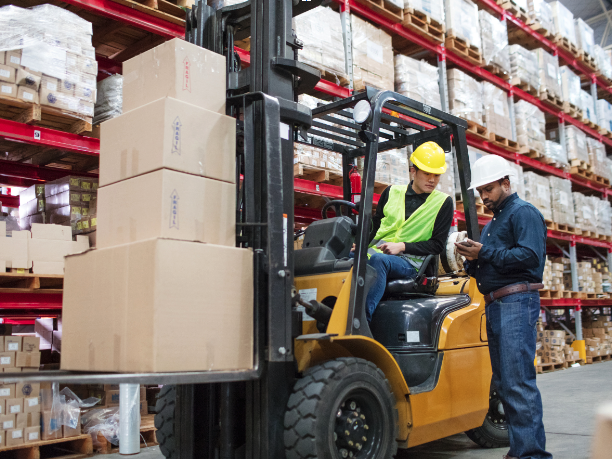SafeDE News
Smarter workplaces are safer workplaces. SafeDE is your resource for OSHA news, regulation changes, recalls, and everything to keep your business safe.
ABCs of Fall Arrest Systems: Components and Safety Tips
Personal Fall Arrest Systems: Components and Safety Tips
Falls are the leading cause of work-related deaths in the construction industry. In order to curb the rising number of fatalities resulting from this type of accident, the Occupational Safety and Health Administration (OSHA) continue to run fall prevention campaigns to keep workers and employers informed about the typical risks of falling in construction.
Part of OSHA’s effort to protect workers against falls is by educating construction workers about Personal Fall Arrest Systems (PFAS). PFAS consists of four major components, also known as the ABCDs of Fall Protection. These four components are Anchorage, Body Support, Connection, and Descent/Rescue.
A is for Anchorage
The PFAS anchorage serves as the final line of defense against falls. In the event that a worker falls from an elevated point, the anchorage system will come into play, catching and suspending them until rescue assistance arrives. According to OSHA guidelines, PFAS must support at least 5,000 pounds.
Structures like I-beams, girders, or columns make ideal anchorage points because of their stability and durability. It is also recommended to have the anchorage point directly above the employee it supports.
There are two main types of anchor systems:
- Fixed Point Anchors are attached to an existing overhead structure.
- Mobile Point Anchors allow movement along beam and trolley systems.
The anchorage connector is any secure device—such as a choker, cross-arm strap, or beam anchor—that links the connecting device (lanyard or lifeline) to the anchor. Together, the anchorage and its connector form the anchor points of the PFAS. Properly selecting and connecting the anchorage is the first step in building an effective fall safety system.
B is for Body Support
The body support component refers to a harness equipped with hardware and heavy-duty straps.
The harness is responsible for supporting the full weight of the worker. The straps are built to secure the chest, thighs, and pelvis, the primary areas where the impact force of a fall is dispersed. It is crucial to use a body support harness that fits snugly without excessively restricting movement.
At the center back, a fall arrest mechanism is attached to a connection point called a D-ring. The D-ring is positioned comfortably right between the shoulder blades. Placing it too high carries the risk of potential head impact in the event of a fall. Placing it too low could lead to a situation where the person falls face down when hitting the ground. The chest straps rest in the middle of the chest while the pelvic strap is placed right under the buttocks.
It is important to perform a gentle tug on the shoulder straps to ensure that the harness is securely fastened. Leaving at least four fingers’ worth of space between the strap and the leg is crucial to prevent issues with circulation in the femoral arteries. Suspension trauma may occur if a worker falls and becomes suspended in the air while wearing a body harness that does not fit properly and has incorrect strap positioning.
C is for Connection
The connection, also known as the lifeline, is what brings the anchorage and body support together. There are two main types of connecting devices:
- Shock-absorbing lanyards are usually six feet long. These flexible cords are designed to reduce the force of a fall by up to 80% when used properly. The shock absorbers will activate once the wearer falls the distance equivalent to the entire length of the lanyard.
- Self-retracting lifelines (SRLs) activate earlier than lanyards. This helps protect the wearer against falls resulting from sudden movements. SRLs initiate braking approximately two feet into the fall. It also provides the advantage of unrestricted movement and the ability to cover a larger work area.
The cable or webbing of self-retracting lifelines and shock-absorbing lanyards are made from strong, lightweight materials like synthetic fibers, stainless steel, or galvanized steel. Corrosion-resistant snap hooks are located on each end so they can be used reversibly. These snap hooks should be easy to attach and self-lock to avoid any accidental disengagement. The snap hooks should have smooth surfaces to avoid damaging the other components of the PFAS.
The connection component of a personal fall arrest system must be able to carry at least 5,000 pounds of weight without breaking to comply with OSHA’s fall safety guidelines.
D is for Descent/Rescue
The fourth component of a personal fall arrest system is the plan to rescue an employee after a fall, otherwise known as the descent. A Self-Rescue can be performed by the worker if they remain conscious and mobile after a fall. This happens to 90% of people who fall less than three feet.
For falls at a distance greater than three feet, a Mechanically Aided Assisted Self-Rescue may be required. The process involves an anchor-supported device being lowered to recover the worker, attaching a snap hook to the D-ring of the harness, and putting them back on safe ground.
If the fallen worker is in a more critical condition, a Mechanically Aided Assisted Rescue with Aerial Lift is needed. The procedure is similar to the process mentioned earlier, with the addition of a trained professional who is lowered to provide support to the fallen worker. This qualified individual ensures that the injured individual is securely anchored to the recovery device before proceeding with the rescue process.
Incorporating the ABCDs (Anchorage, Body Support, Connectors, and Descent/Rescue) in your fall arrest systems can help protect construction workers from falls and prevent the occurrence of fall-related accidents in construction. The proper installation and correct usage of these components are vital to ensuring your safety while working.
Frequently Asked Questions (FAQs)
What is a personal fall arrest system?
A personal fall arrest system (PFAS) is a combination of safety measures that greatly reduce the chances of fall-related injuries and fatalities among employees working in elevated areas.
What are the components of a personal fall arrest system?
The personal fall arrest system consists of four major components, more commonly known by the acronym of ABCD: Anchorage, Body Support, Connection, and Descent.
How do you use a fall protection harness and lanyard safely?
First, the harness must perfectly fit the wearer’s body to provide maximum security and comfort, with straps to support the chest, thighs, and buttocks. Next, the lanyard must have the appropriate length to connect the worker’s harness to the anchorage. It should also have snap hooks that can lock securely to all connection points.
What is the purpose of a personal fall arrest system?
The personal fall arrest system is designed to protect a worker during a fall by suspending them in the air in a secure and comfortable position until rescue services arrive.
What should be included in a fall protection plan?
A fall protection plan should include the ABCDs of Fall Protection. These are Anchorage, Body Support, Connection, and Descent / Rescue.
What are the anchor point requirements for fall protection?
The anchor point must be able to support 5,000 pounds of weight per attached worker, according to OSHA’s recommended guidelines. Columns, girders, and I-beams are good examples of good anchor points since they are made from strong materials like concrete and metal alloys. The ideal anchorage must also be directly above so it can fully support the suspended worker in case of a fall.
What types of snap hooks are suitable for fall arrest systems?
Snap hooks used in a personal fall arrest system must be made from strong, corrosion-resistant metals. They must also be self-locking to avoid premature disengagement between the anchor points and the worker’s body harness.
How should the D-ring or support point be placed on a safety harness?
The D-ring must be fitted between the shoulder blades of the worker to keep them secure and positioned upright in case of a fall.
What is the difference between fall restraint and fall arrest systems?
Fall restraint systems are fixed mechanisms and policies implemented in the workplace to avoid the risk of accidental falls. Fall arrest systems are designed to keep a worker suspended in case they actually fall.
What is the webbing used for lifeline made of?
The lifeline or lanyard consists of webbing made of a durable material such as stainless steel, galvanized steel, or synthetic fiber.
Get SafeDE News
Workplace safety for all businesses.
SafeDE provides FREE comprehensive onsite surveys for small and medium sized private sector establishments to identify potential workplace hazards, improve safety and health management systems, and assist in voluntary compliance with federal OSHA regulations.
Related News
-1.png)
Committed to Safety: What is It & Why It Matters

Winter Driving 101: 10 Tips for Employees for Road Safety
-1.png)
Workplace Safety Tips: Protect Yourself with PPE and More

Basic First Aid Tips for Workplace Safety
-1.png)
SafeDE and Help is Here DE Partner to Revolutionize Workplace Safety and Wellness in Delaware
-1.png)
5 Essential Workplace Fire Safety Tips to Prevent Fires

Safe & Sound: Top 100 Workplace Safety Slogans for a Safer Environment

20 Tips for Safe Forklift Operation | Expert Advice
-1.png)

.png)

